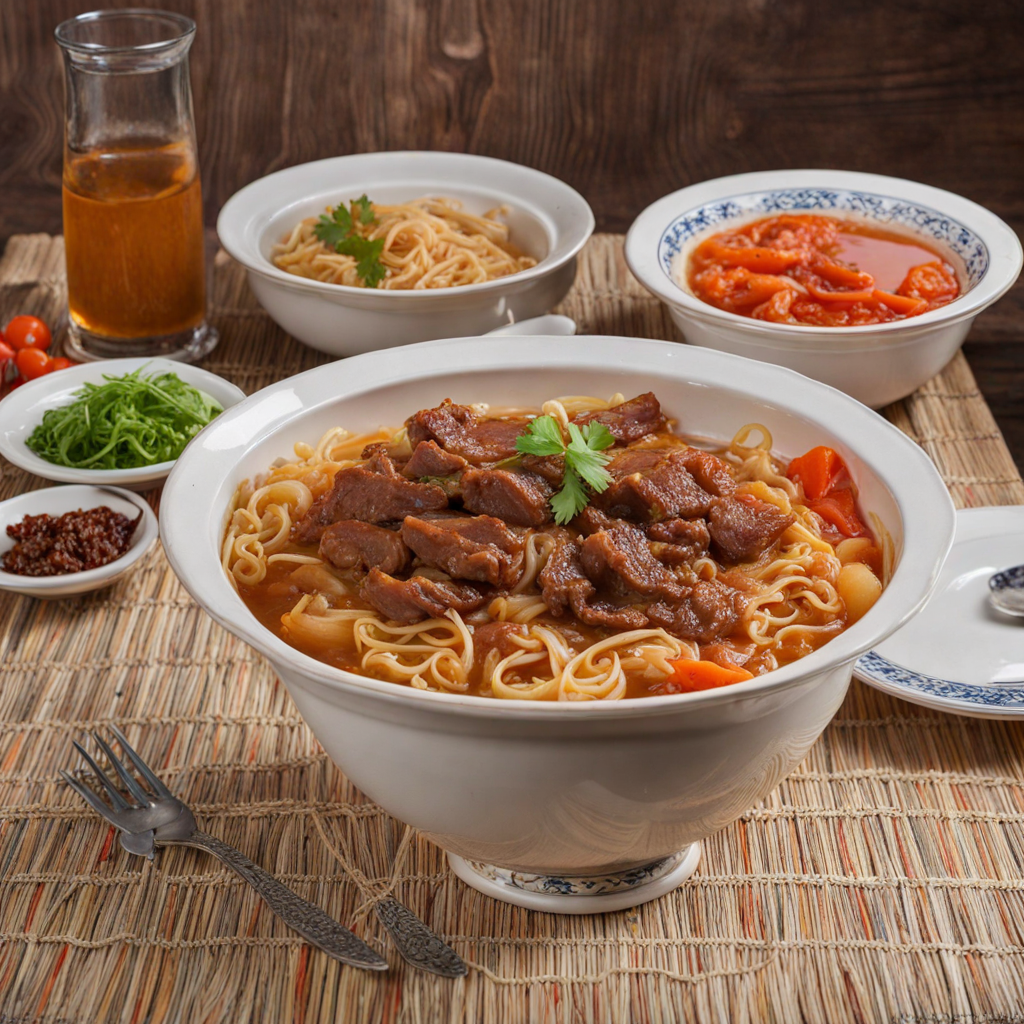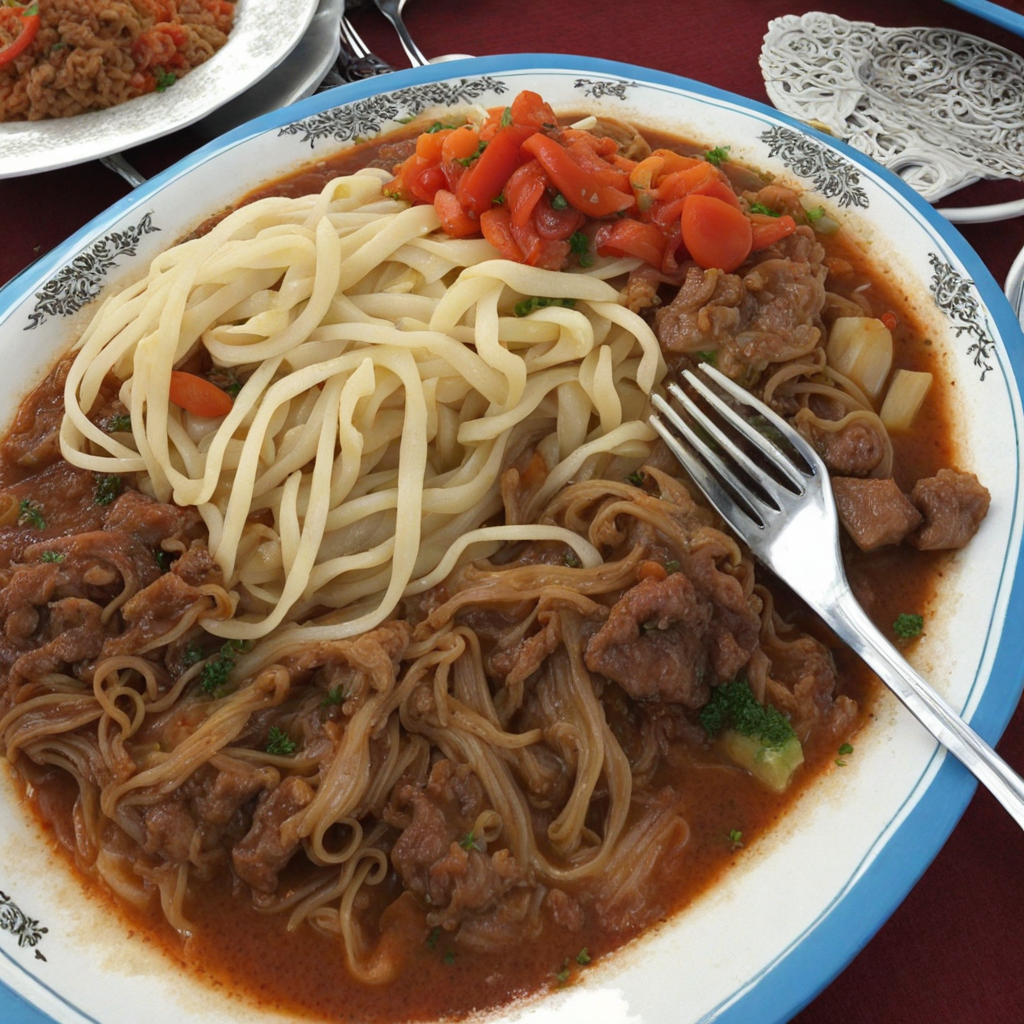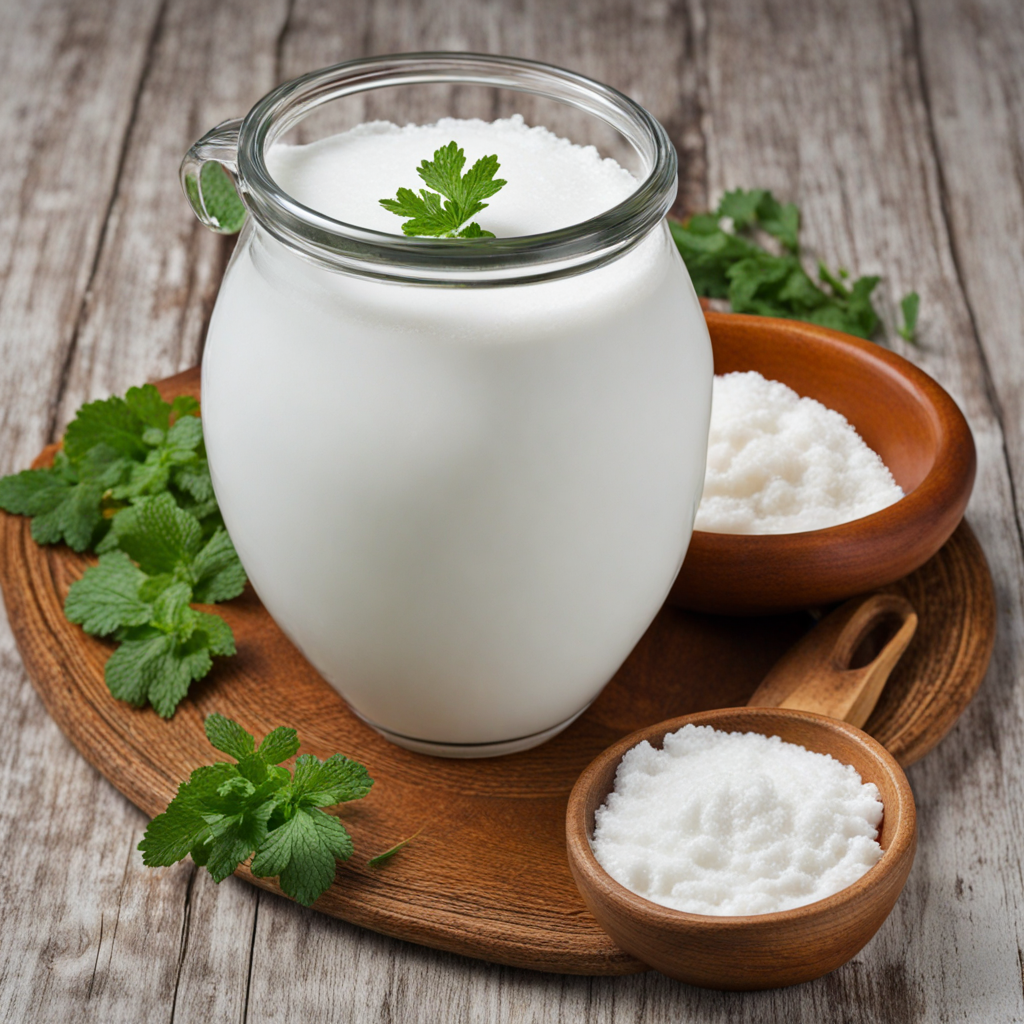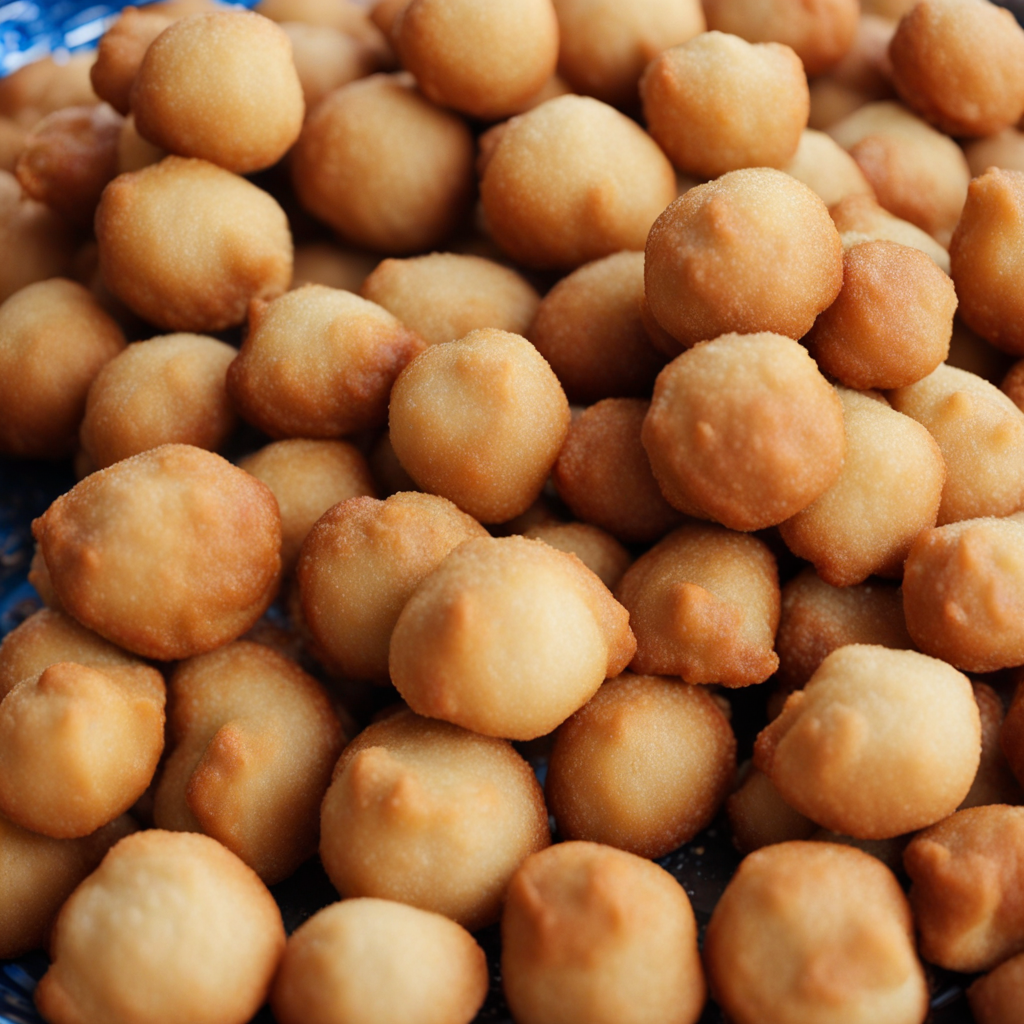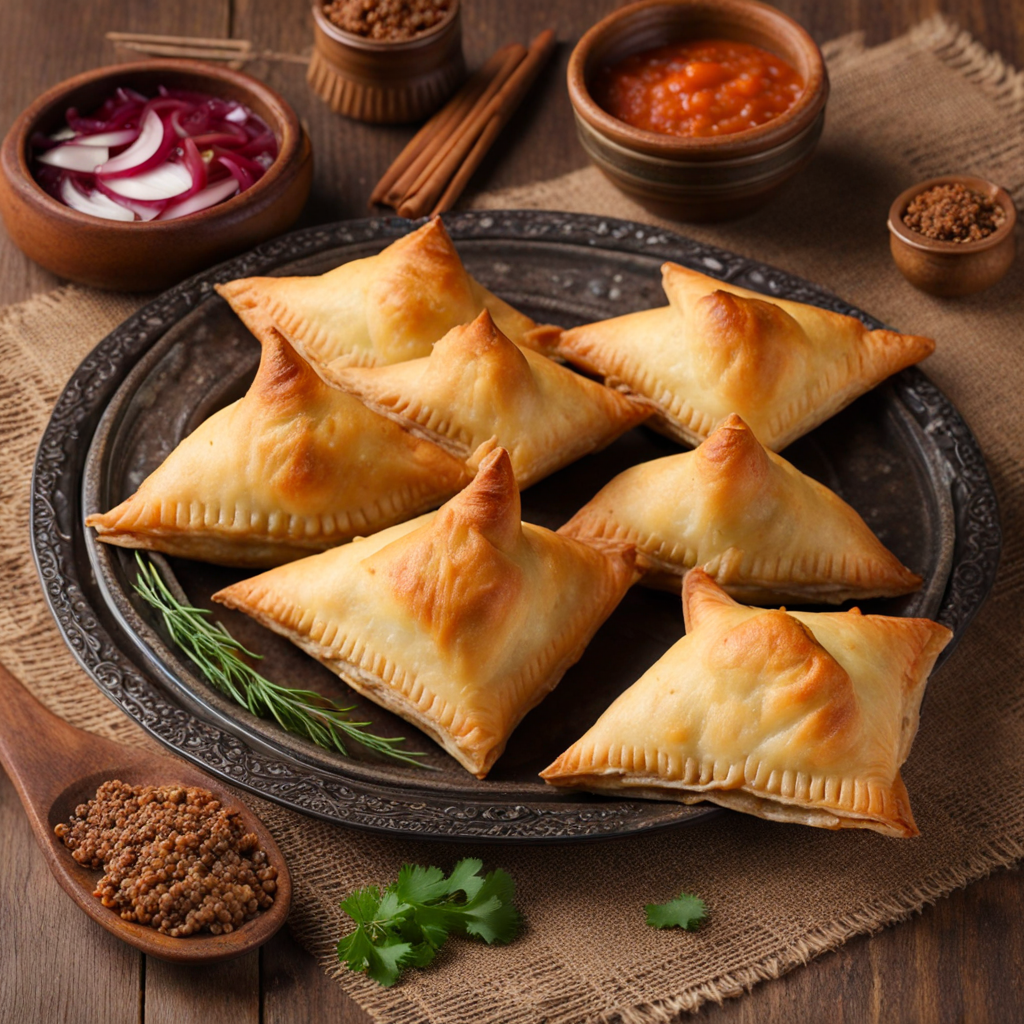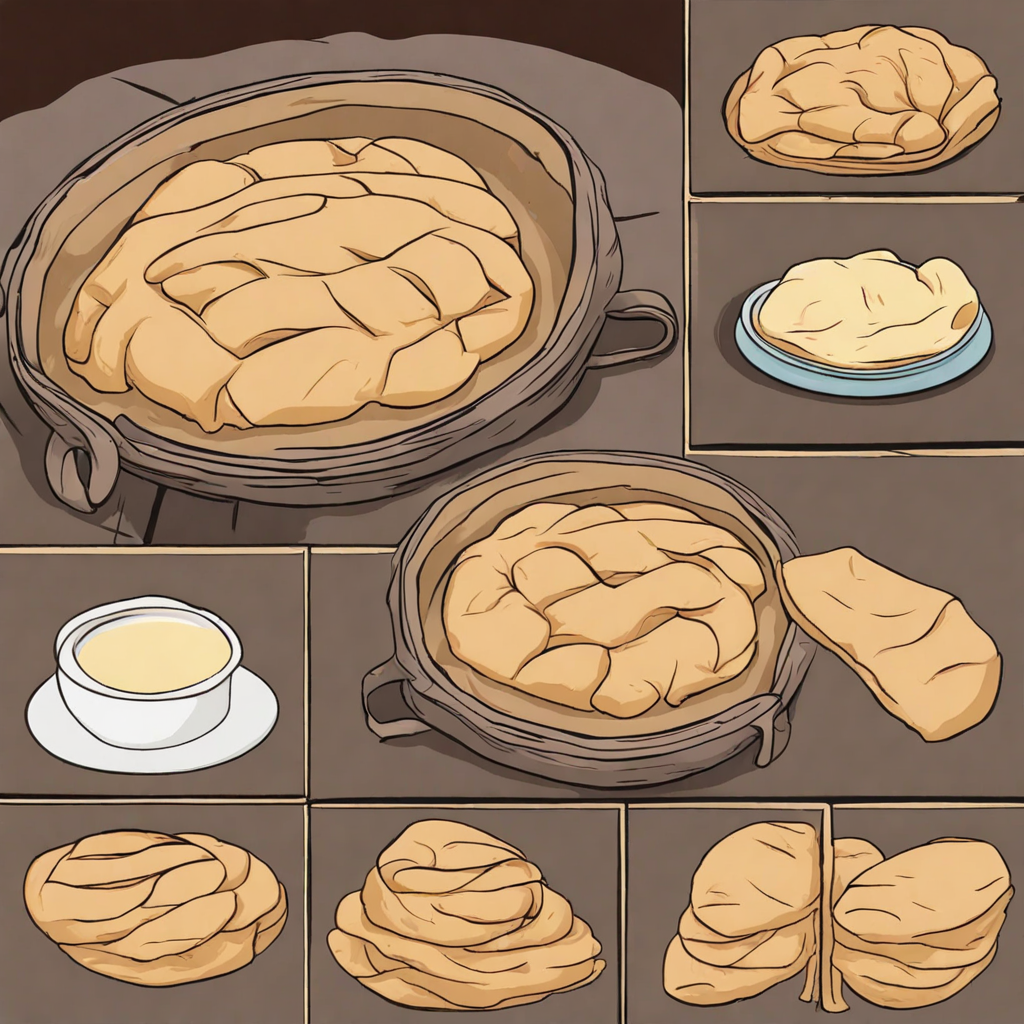Laghman
Laghman is a hearty and flavorful dish that showcases the rich culinary traditions of Kazakhstan, blending influences from Central Asian and Uyghur cuisines. At its core, Laghman features hand-pulled noodles that are a labor of love, typically made from wheat flour, water, and a pinch of salt. These noodles are skillfully stretched and twisted by hand to achieve a unique texture that is both chewy and tender. The dish is often served with a savory stir-fry of meat, commonly lamb or beef, alongside an array of colorful vegetables such as bell peppers, carrots, and tomatoes, which add vibrancy and freshness to the dish. The aroma of garlic and spices wafts through the air, inviting food lovers to dig in. The sauce that accompanies Laghman is a crucial component, often comprised of a rich blend of herbs and spices, including cumin, coriander, and sometimes a hint of chili for warmth. This sauce is typically simmered to perfection, allowing the flavors of the meat and vegetables to meld together, creating a comforting and savory broth that envelops the noodles. The combination of the chewy noodles and the tender, flavorful meat creates a delightful contrast, while the vegetables provide a satisfying crunch that enhances the overall experience. Traditionally, Laghman is not just a meal; it is a communal experience. Often served in large portions, it invites families and friends to share and enjoy together. Whether enjoyed at a bustling street market or at home, this dish embodies the spirit of togetherness and the rich cultural heritage of Kazakhstan. Each bite of Laghman tells a story of tradition, skill, and the warmth of shared meals, making it a must-try for anyone seeking to explore new and exciting flavors.
How It Became This Dish
Origin of Лағман Лағман (Lagman) is a traditional dish that has its roots in the culinary practices of Central Asia, particularly among the Uyghur and Kazakh communities. The name "Лағман" is derived from the Uyghur word "lamian," which means "pulled noodles." This dish is believed to have been introduced to Kazakhstan through the migration of Uyghur people, who brought with them their rich culinary traditions. The earliest references to Лағман can be traced back to the Silk Road, where traders and travelers exchanged not only goods but also cultural practices, including food. The preparation of Лағман involves hand-pulling noodles, a technique that showcases the skill and artistry of the cook. The noodles are typically made from wheat flour and water, kneaded into a smooth dough, and then stretched and pulled into long strands. This method of making noodles is a significant aspect of the dish, as it adds a unique texture and chewiness that is characteristic of Лағман. The dish itself consists of these noodles served in a rich broth or stir-fried with meat and vegetables, often seasoned with spices that reflect the diverse flavors of the region. Cultural Significance Лағман holds a special place in the hearts of Kazakhs and other Central Asian communities. It is not merely a dish but a symbol of hospitality and communal spirit. In Kazakhstan, Лағман is often served during family gatherings, celebrations, and special occasions, reinforcing social ties among family and friends. The act of sharing food is a vital aspect of Kazakh culture, and Лағман, with its hearty ingredients and comforting flavors, plays a central role in these gatherings. In addition to its role in social settings, Лағман also reflects the cultural identity of the Kazakh people. The dish has evolved over time, incorporating local ingredients and flavors, making it a unique representation of Kazakhstan's culinary landscape. It is common to find variations of Лағман that include different types of meat, such as lamb, beef, or chicken, alongside an array of vegetables like bell peppers, carrots, and onions. This adaptability of Лағман illustrates the blending of culinary traditions and the importance of regional ingredients in its preparation. Development Over Time As Kazakhstan underwent significant changes throughout the 20th century, so did the preparation and consumption of Лағман. The Soviet era brought about a shift in food availability and culinary practices, as traditional dishes were often modified to fit the limited resources and standardized production methods. Despite these changes, Лағман retained its popularity among the Kazakh people, who continued to prepare the dish using family recipes passed down through generations. In recent years, there has been a resurgence of interest in traditional foods, including Лағман, as part of a broader movement to preserve cultural heritage. Many Kazakhs are returning to their roots, seeking to reconnect with their culinary traditions. This revival has led to the establishment of restaurants specializing in authentic Kazakh cuisine, where Лағман is often a highlight on the menu. Chefs are experimenting with new interpretations of the dish, incorporating modern cooking techniques while honoring traditional flavors. Furthermore, Лағман has gained international recognition as a symbol of Central Asian cuisine. Food enthusiasts and travelers are increasingly drawn to the unique flavors and textures of this dish, leading to its inclusion in culinary festivals and global food fairs. This exposure has not only elevated Лағман's status but also sparked interest in other Kazakh dishes, encouraging a cross-cultural exchange of culinary knowledge and appreciation. Regional Variations Throughout Kazakhstan and the broader Central Asian region, Лағман has inspired numerous regional variations. Each community may have its unique spin on the dish, influenced by local ingredients, cooking methods, and cultural preferences. For example, in some regions, the noodles may be boiled and then tossed with stir-fried meat and vegetables, while in others, they are served in a broth. These variations reflect the diverse culinary landscape of Kazakhstan, showcasing how Лағман has adapted to different tastes and traditions. In addition to the variations in preparation, the ingredients used in Лағман can also differ significantly. In urban areas, where access to a variety of vegetables and spices is more readily available, cooks may experiment with bold flavors and innovative combinations. Conversely, in rural regions, the dish may rely more on locally sourced ingredients, emphasizing simplicity and traditional techniques. This adaptability ensures that Лағман remains relevant and beloved across different demographics and lifestyles. Modern Day Appreciation Today, Лағман is celebrated not only as a comfort food but also as a culinary art form. The hand-pulling technique of the noodles is often demonstrated in culinary schools and cooking classes, attracting both locals and tourists eager to learn about this traditional method. Many chefs emphasize the importance of using high-quality ingredients, from the flour used for the noodles to the freshest vegetables and meats, in order to create a truly authentic and delicious Лағман. Social media has also played a significant role in the resurgence of Лағман's popularity, with food bloggers and influencers sharing their experiences and recipes online. This digital engagement has led to a greater appreciation for Kazakh cuisine as a whole, with Лағман often highlighted as a must-try dish for anyone visiting the region. The visual appeal of the dish, with its vibrant colors and enticing presentation, makes it a favorite subject for food photography, further promoting its recognition. As Kazakhstan continues to embrace its culinary heritage in the global food scene, Лағман stands as a testament to the resilience and richness of its culture. The dish not only nourishes the body but also provides a sense of connection to the past, a reminder of the shared history and traditions that shape the identity of the Kazakh people. Through every bowl of Лағман served, the story of its origin, cultural significance, and development over time continues to unfold, inviting all to partake in the flavors of Kazakhstan.
You may like
Discover local flavors from Kazakhstan


